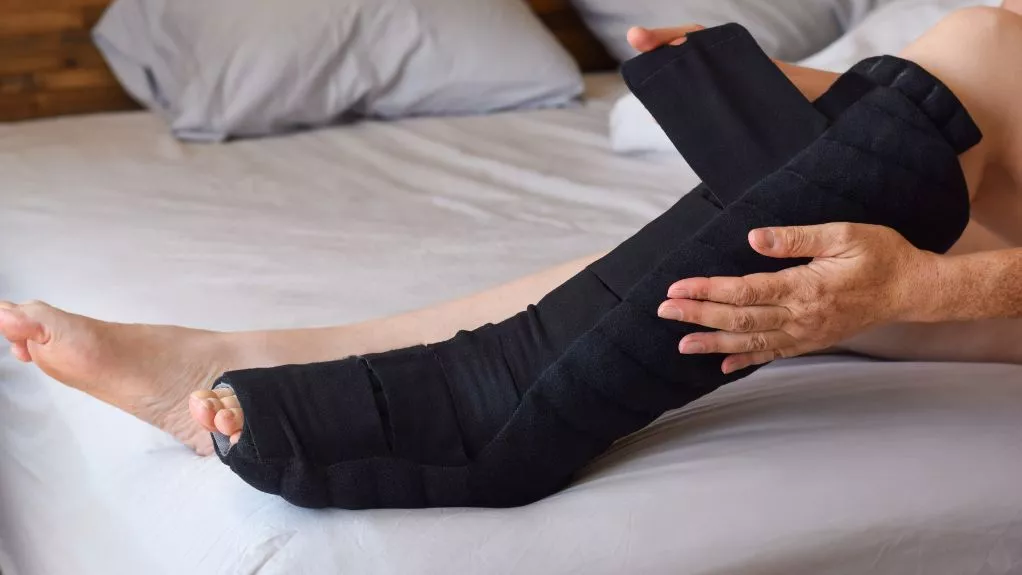
You may have noticed some swelling or changes in your limb, but how do you know if it's something more serious like lymphedema? Understanding the signs and symptoms could be the key to effective management and improved quality of life. By being aware of subtle changes and taking proactive steps, you can navigate the challenges of lymphedema with confidence. So, what exactly should you look out for, and how can you take charge of your health?
Early Signs of Lymphedema
Noticing early signs of lymphedema can be crucial for prompt intervention and management. If you have undergone lymph node removal or radiation therapy, it's important to stay vigilant.
Swelling in the affected limb is often the first indicator. This swelling may initially be soft and subtle, but over time it can become more pronounced and persistent. Keep an eye out for changes in the size or shape of your arm or leg.
Another early sign to watch for is a feeling of heaviness or tightness in the affected limb. You might also notice decreased flexibility in the joints or a sensation of tingling or numbness.
Skin changes, such as tightness or redness, can also be early indicators of lymphedema. By recognizing these signs early on, you can work with your healthcare provider to develop a plan for managing lymphedema effectively. Remember, early detection is key to successful treatment.
Recognizing Symptoms and Progression
Stay vigilant for any changes in the swelling, heaviness, or skin condition of the affected limb, as these can signal the progression of lymphedema. If you notice an increase in the size of the affected limb or a feeling of fullness or heaviness that wasn't present before, it's essential to consult your healthcare provider promptly. Additionally, be on the lookout for changes in the skin, such as tightness, redness, or increased temperature. These symptoms may indicate that lymphedema is advancing.
As lymphedema progresses, you might experience decreased flexibility in the affected limb or notice that your clothes or jewelry feel tighter than usual. These signs suggest that the swelling is worsening and require attention. It's crucial to monitor any changes carefully and communicate them to your healthcare team to adjust your management plan accordingly. Remember, early detection and intervention are key to effectively managing lymphedema and minimizing its impact on your daily life.
Effective Management Strategies
To effectively manage lymphedema, implementing a comprehensive treatment plan tailored to your specific needs is essential. Your management strategies may include a combination of therapies such as manual lymphatic drainage, compression garments, exercise, and skin care.
Manual lymphatic drainage, performed by a certified therapist, can help reduce swelling and improve lymphatic circulation. Wearing compression garments as prescribed can also aid in controlling swelling and promoting lymphatic flow. Regular exercise, tailored to your abilities, can further enhance lymphatic drainage and overall physical well-being.
Additionally, maintaining good skin hygiene and moisturizing daily can help prevent infections and skin complications associated with lymphedema. It's crucial to follow your healthcare provider's recommendations closely and attend regular follow-up appointments to monitor your progress and make any necessary adjustments to your treatment plan.
Improving Quality of Life
To enhance your overall well-being and make daily tasks more manageable, incorporating self-care practices tailored to your needs is crucial in improving the quality of life while living with lymphedema.
Establishing a routine that includes gentle exercises, such as walking or yoga, can help improve circulation and reduce swelling. It's also important to maintain a healthy diet rich in fruits, vegetables, and lean proteins to support your immune system and overall health.
Additionally, practicing good skin hygiene by keeping your skin clean and moisturized can help prevent infections, a common concern for individuals with lymphedema. Wearing compression garments as recommended by your healthcare provider can assist in managing swelling and promoting lymphatic flow.
Embracing relaxation techniques like deep breathing exercises or meditation can help reduce stress, which in turn may alleviate symptoms of lymphedema. Seeking support from friends, family, or a therapist can also contribute to a more positive outlook and improve your overall quality of life while navigating the challenges of lymphedema.




